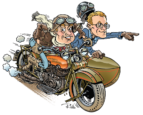1929 – 1972 A BSA called Arthur
My Dad, Arthur, had a good mate, also called Arthur, who I guess to avoid mistakes, was always referred to as Artie. As my middle name is Arthur, and in memory of both of them, my BSA is also now known as ‘Arthur’. In 1931 Artie’s older brother, Reg, bought the BSA second-hand from Bennett & Wood (BSA agents in Sydney), and rode it North 600 miles (960km) to Brisbane.
In April 1932 this picture was taken(below) with Reg in the saddle and Artie on pillion, about to leave Brisbane to ride down to Sydney and return, to be among the first to motor across the newly opened Sydney Harbour Bridge. This was a 1200 mile (2000km) round trip on gravel roads, following which the bike was in daily use in and around Brisbane.
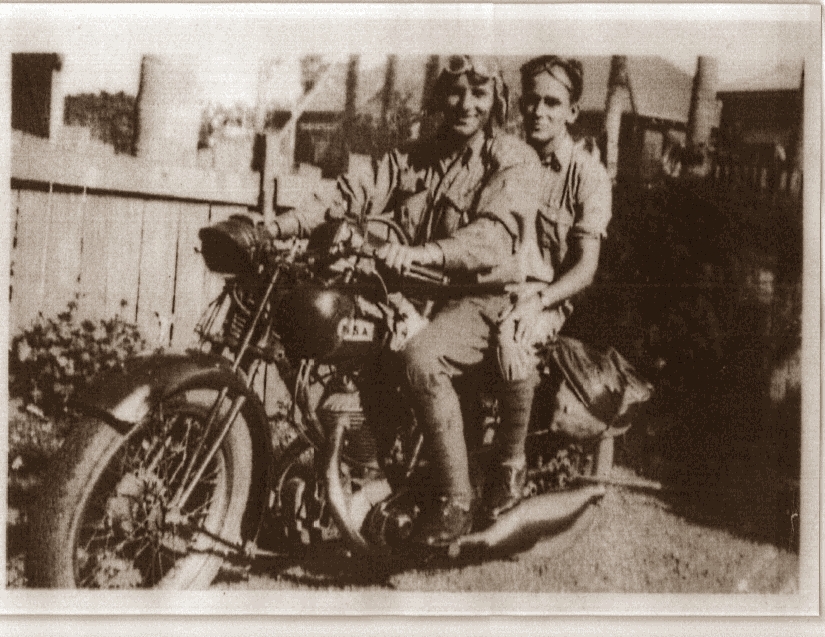
In 1934 Artie purchased the BSA from his older brother Reg and rode it north from Brisbane 600 miles (1000km) to Mackay. Artie replaced the acetylene lighting with a battery-powered electric set. In 1935 a sidecar was fitted, and the BSA outfit ridden the 960km back down to Brisbane over the mainly rough gravel highways of the time. It was used daily there for two years, before again making the 600 mile trip back north to Mackay in late 1937.
Between 1937 and 1945 the BSA outfit was in daily use as Artie’s only vehicle (he told me he did all his courting on it), until he finally bought a Morris 8 car in 1945, at the end of WWII. The sidecar was sold around 1947, and the bike then ridden only sporadically until 1958, when it was finally de-registered and laid up in Artie’s garage. By 1972 when I purchased it, the old BSA was stored in Artie’s garden shed, and though rather worn and weary, was still complete.
1972 – 2002 Arthur Resurrected
I turned 20 in 1972, and with rampant enthusiasm, and against my Dad’s excellent advice, I immediately dismantled the old BSA to “fix it up”. It stayed like that for the next 27 years, most of the time in tea chests underneath my parents house in Mackay, North Qld, Aus.
The photo below shows the BSA “mocked-up” in 1974 in my parent’s backyard in Mackay, before I left on a trip with a mate to Europe and England. The “mocking up” was to help my vague ideas of acquiring the skills and knowledge while in the UK, to enable me to restore the old BSA on my return to Australia.
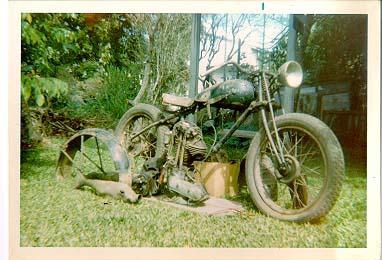
However I stayed on in England until 1985, and then returned not to Australia but came to New Zealand, having met my NZ wife in London in 1981. We were married in New Zealand in 1988 and I finally returned home to Queensland in 1990 to crate up the old BSA and bring it over to Auckland. Once here I passed the engine to a highly-respected NZ VMCC motorbike engineer, the late Dave Philpott, also an Aussie who had also settled in New Zealand some 25 years earlier than myself.
Dave was a very sought after resource, and while I procrastinated about my exact intentions the years went by with very little progress on the engine rebuild. Instead my focus went into renovating our first, and then second, homes and helping to raise our 3 children. In January 1998 I finally made a New Years resolution to restore the old BSA that year, in recognition that it would turn a venerable 70 years of age in 1999.
I was put in touch with an ex-toolmaker and part-time bike re-builder (John Singleton) with the interest, time, skills and enthusiasm to help me rebuild the bike from its basket case state. Having reached agreement on the approach, the dismantled engine was retrieved after its 7 years in Dave’s workshop, complete with its rebuilt gudgeon and including one of Daves own hand-tooled big-end bearings.
Throughout 1998 and 1999 the old BSA slowly came together to be recognisable as a motorcycle, only to then be dismantled again for painting and final re-build. The battery powered electric setup, as converted in 1934, was retained but uses an acetylene headlamp body similar to the one in the 1932 photo, which has been converted to a 6V configuration.
In mid-1998 a world-wide search began for the 3-speed hand gear-change gate, the one major part I’d managed to lose over the 27+ years the bike was dismantled. Via the Internet I obtained the exact part for £5 in the Netherlands via an Aussie BSA guy living in the USA who had sold it to a Dutch BSA guy to use in his rebuild. Luckily for me his rebuild turned out to require a 4-speed gearbox, so the 3-speed gate he had was superfluous to his needs.
In the process I discovered the incredible camaraderie and friendship of BSA fans around the globe, and the unstinting help they readily give to like-minded BSA-nuts who they’re never likely to meet. I also discovered information about the 2 Port Light model itself, and the apparently small number of surviving examples worldwide whetted my appetite to know more about my particular model BSA motorcycle.
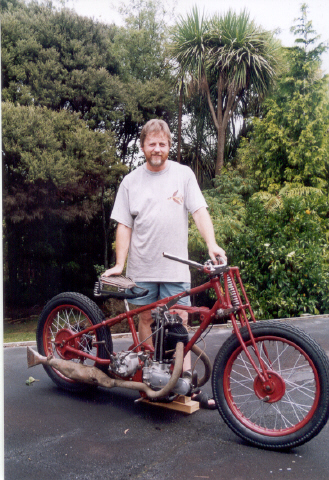
In February 1999 the photo (above) was taken of me proudly standing next to Arthur who was finally back on his wheels. Myriad small items took up the rest of 1999 before the bike was first fired up in September 1999 for the 1st time in 41 years! Recurrent problems with the fuel tank which had been very rusted caused much rework and many dollars to restore (we even had to strip and re-paint it twice) but I was determined to get the bike on the road in its 70th year which we achieved just..!. as it was VIN’d and registered on 31st December 1999.
It took all of 2000 and half of 2001 to iron out persistent bugs in the carburation and have the rebuilt magneto re-wound again to get it to work. It also took me some time to learn the peculiarities of starting and smoothly riding a vintage bike. Unfortunately this period was also considerably lengthened by twice stripping the 2nd gear pinion, which was found to have been damaged and repaired sometime pre-1958. Finding that undamaged original 2nd gears were unobtainable anywhere, I gave up the search and had a small run of 2nd gear pinions made in modern materials, at significant cost, and after several months delay the bike was fully operational.
By the Summer of 2001 the BSA was finally starting 1st kick, running well, and I was finding it very enjoyable, easy and fun to ride. I entered the New Zealand BSAOC National Rally in Easter 2002 here in Auckland (NZ), where to my very great surprise old Arthur was awarded the prize for “Best Pre-1945 BSA”. The photo (previous page) is of Arthur in April 2000 not long after restoration, without the stone chips and oil stains of the past 12 years riding. These don’t bother me at all however, as I support the ethos that “it’s better to ride em than hide em..!”
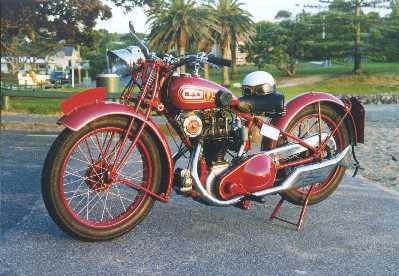
The BSAOC have certified the BSA’s frame and engine numbers are those of a 1929 production batch S29-19 2 Port Light, it is believed to have been crated straight off the production line as export to Bennett & Wood, Sydney, Australia. Sadly old Arthur suffered a gudgeon seizure in 2011, necessitating a new piston and engine rebuild. Thats now completed and as at June 2012 Arthur is running fine again; is fully WOFd and registered, and hopefully hell travel many more miles in the years to come.
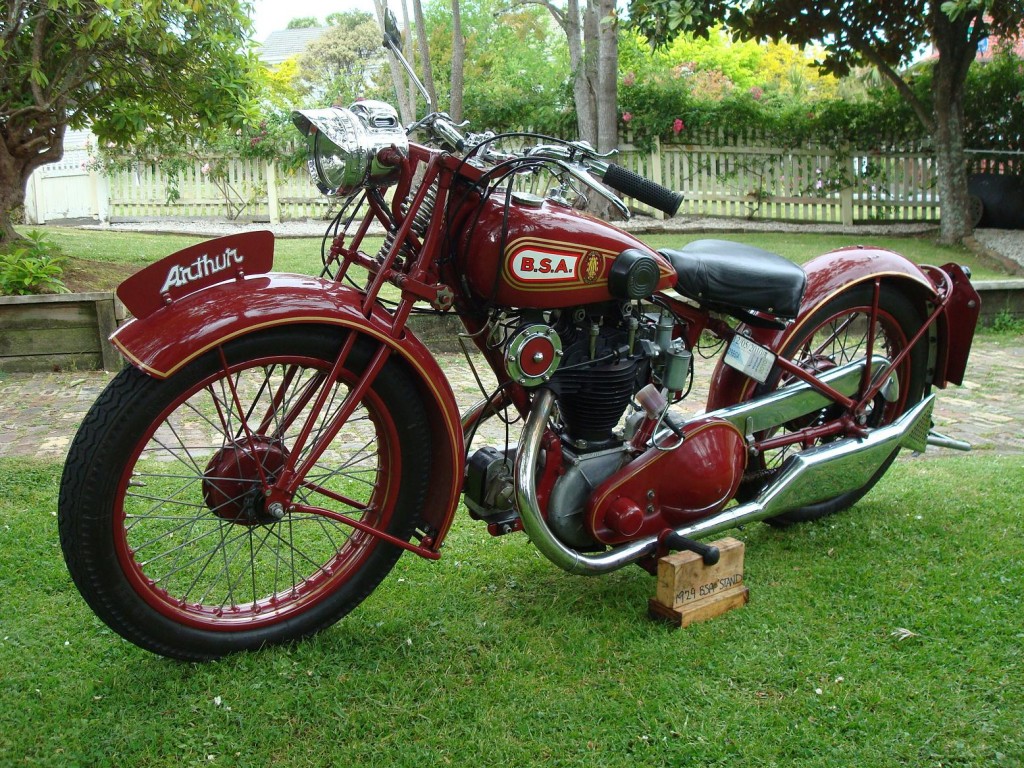
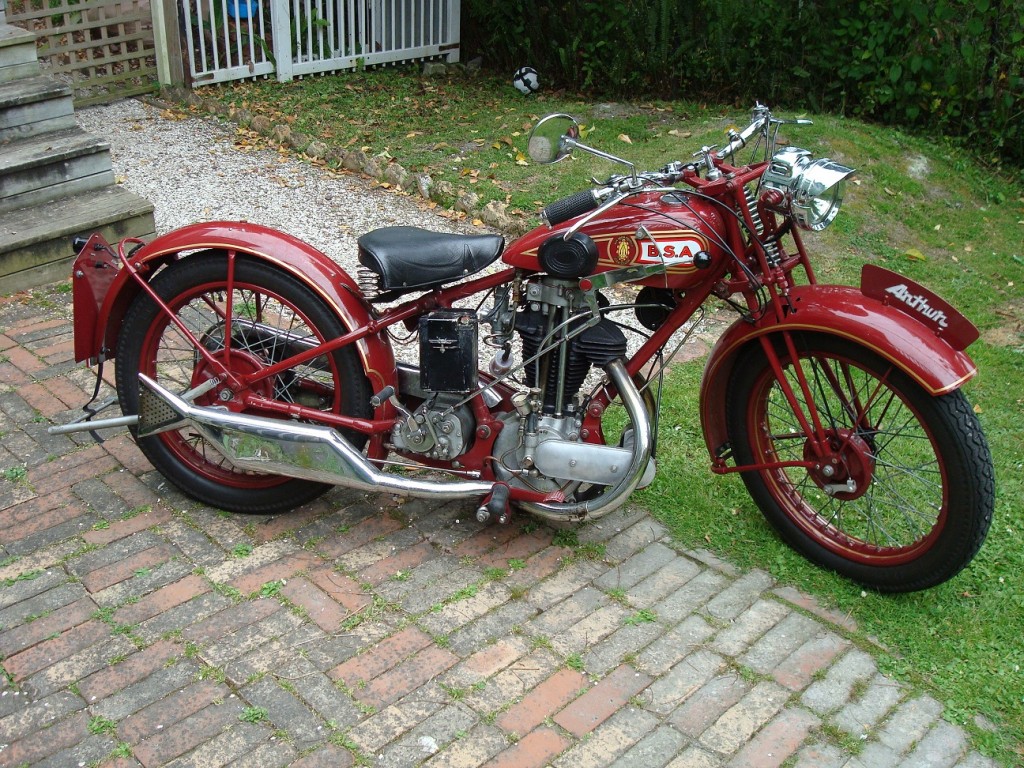
The purists out there may note the colour being slightly sideways from factory standard, when asked why the colour choice Les responded with “Changes like customising or adding after-market items were also the norm back in 29. In that spirit, my favourite colour is Red (Indian Red in particular), so thats what Arthur is” Spot on, and damn it looks good.
Les has also posted this article over at vintagebike.co.uk and is always keen to track down more examples of the marque as they were only made for 2 years and there is very few of them left. If you’d like to touch base with Les please leave us a message via our contact page and we’ll pass it along.
